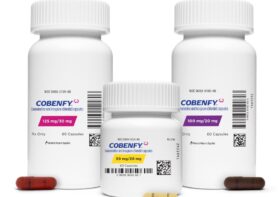Alert: These Over-The-Counter NSAIDs Double the Risk of Miscarriage

By Dr. Mercola
It’s estimated that between 10-25 percent of pregnancies result in miscarriage, and in most cases the cause is unknown, presenting a frustrating and heartbreaking scenario for many women who feel powerless to prevent a second or third miscarriage from occurring.
There are, however, a growing number of factors that could play a role in your miscarriage risk, and one recently revealed is not only widespread but also very strongly correlated to miscarriage risk, so I wanted to bring it to the attention of those who may be newly pregnant or trying to conceive. Understanding this risk factor for miscarriage will give you a powerful way to take control of your pregnancy.
Avoid NSAIDS if You’re Pregnant or Trying to Conceive
Many millions of Americans depend on non-steroidal anti-inflammatory drugs (NSAIDs) to relieve pain from arthritis, headaches, injuries and countless other conditions that cause chronic pain, but the drugs are among the most dangerous on the market.
If you’re pregnant, it’s particularly imperative that you find another option for pain relief, as a new study found that taking non-aspirin NSAIDs in early pregnancy more than doubles your risk of miscarriage. The study involved both prescription and over-the-counter NSAIDs, all of which increased the risk of miscarriage when taken alone or in combination:
- Diclofenac
- Naproxen (Aleve)
- Celecoxib (Celebrex)
- Rofecoxib (Vioxx, now withdrawn)
- Ibuprofen (Advil)
The researchers concluded:
“Gestational exposure to any type or dosage of nonaspirin NSAIDs may increase the risk of spontaneous abortion. These drugs should be used with caution during pregnancy.”
Despite this finding, and the fact that other studies, including one published more than a decade ago, also have linked NSAIDs with an increased risk of miscarriage, the U.S. Food and Drug Administration’s (FDA) 2011 Medication Guide for NSAIDs does not mention the potential risk. It does warn that pregnant women should not use NSAIDs late in pregnancy — ibuprofen in the third trimester has been linked to heart problems in the baby, low amniotic fluid, and prolonged labor — but this does nothing to warn and protect those who are newly pregnant.
NSAIDs work by suppressing the production of prostaglandins (fatty acids needed for successful implantation of an embryo in the womb). Because NSAIDs and aspirin act on your whole body, they could lead to abnormal implantation that predisposes an embryo to miscarriage.
The link is well established now, as still more research from 2003 found women who take NSAIDS or aspirin during pregnancy increase their risk of miscarriage by 80 percent.
Most Medications are Not Tested for Safety During Pregnancy
The truth is you need to be very careful when taking any drugs while you’re pregnant. The nine months of development that take place in the womb are the most rapid and most vulnerable period of your baby’s life. For this reason, it is generally best to avoid taking any medications unless absolutely necessary, including while you’re trying to conceive, as you could become pregnant and not know it.
Most medications have never been tested on pregnant women and their effects on a developing baby are completely unknown. Even the U.S. Centers for Disease Control and Prevention (CDC) acknowledges that very little is known about the impacts of most medications on unborn babies:
“We do not have enough information about the effects of many medications when they are taken by pregnant women … All prescription and over-the-counter medications are tested to see if they are safe and effective before they become available to the public. Pregnant women usually are not included in these tests because of the possible risks to the unborn baby.
As a result, little information is available about the safety of most medications during pregnancy—including those available over the counter—when they first become available.”
This is true even among drugs that are widely used by pregnant women. For instance, nearly 4 percent of pregnant women take antidepressants during their first trimester, even though a study last year — by one of the same researchers who conducted the new NSAID study — found they may increase your miscarriage risk by 68 percent. So it’s best to use extreme caution with medications and only use those that are absolutely necessary.
More Reasons to Avoid NSAIDs (Even if You’re Not Pregnant)
NSAIDs are not only dangerous to pregnant women and fetuses; they pose significant health risks to virtually everyone who takes them, and are particularly disastrous for your heart.
You may be familiar with Vioxx, an NSAID pulled from the market in 2004 after 60,000 people died from its increased heart risks. Later that year, the FDA also warned that NSAIDS, such as Cox-2 inhibitors Bextra (which was pulled from the market in 2005) and Celebrex, as well as over-the-counter varieties like Aleve, Ibuprofen and aspirin, also lead to an increased risk of cardiovascular problems.
A 2011 study by researchers at The University of Bern in Switzerland also revealed that NSAIDs lead to a two- to four-fold increase in your risk of heart attacks, stroke or cardiovascular death, noting that it would only take 25-50 patients being treated with NSAIDs for one year to lead to an additional heart attack or stroke. Aside from significantly increasing your heart risks, NSAIDs are linked to serious gastrointestinal risks, like bleeding of the digestive tract, increased blood pressure and kidney problems.
Additionally, another class of prescription drugs, statins, which are used on tens of millions to lower cholesterol levels, should NEVER be taken in pregnancy as they are a Class X drug, which means they are virtually guaranteed to cause birth defects or miscarriage.
What are Some Non-Drug Options for Pain Relief During Pregnancy?
Medications only provide symptomatic relief and in no way, shape or form treat the underlying cause of your pain. So if you are suffering, I suggest you work with a knowledgeable health care practitioner to determine what’s really triggering your pain, and then address the underlying cause. You don’t need to suffer unnecessarily in the meantime, however; the following options provide excellent pain relief without any of the health hazards that medications carry:
- Astaxanthin: One of the most effective oil-soluble antioxidants known. It has very potent anti-inflammatory properties and in many cases works far more effectively than many NSAIDs. Higher doses are typically required and one may need 8 mg or more per day to achieve this benefit.
- Ginger: This herb is anti-inflammatory and offers pain relief and stomach-settling properties. Fresh ginger works well steeped in boiling water as a tea or grated into vegetable juice.
- Curcumin: In a study of osteoarthritis patients, those who added 200 mg of curcumin a day to their treatment plan had reduced pain and increased mobility. A past study also found that a turmeric extract composed of curcuminoids (plant-based nutrients that contain powerful antioxidant properties) blocked inflammatory pathways, effectively preventing the launch of a protein that triggers swelling and pain.
- Krill Oil: The omega-3 fats EPA and DHA contained in krill oil have been found by many animal and clinical studies to have anti-inflammatory properties useful for pain relief. They are also incredibly important during pregnancy.
- Bromelain: This enzyme, found in pineapples, is a natural anti-inflammatory. It can be taken in supplement form but eating fresh pineapple may also be helpful.
- Cetyl Myristoleate (CMO): This oil, found in fish and dairy butter, acts as a “joint lubricant” and an anti-inflammatory. I have used this for myself to relieve ganglion cysts and a mild annoying carpal tunnel syndrome that pops up when I type too much on non-ergonomic keyboards. I used a topical preparation for this.
- Evening Primrose, Black Currant and Borage Oils: These contain the essential fatty acid gamma linolenic acid (GLA), which is useful for treating arthritic pain.
- Cayenne Cream: Also called capsaicin cream, this spice comes from dried hot peppers. It alleviates pain by depleting the body’s supply of substance P, a chemical component of nerve cells that transmits pain signals to your brain.
- Methods such as yoga, acupuncture, meditation, hot and cold packs, and even holding hands can also result in astonishing pain relief without any drugs.
3 Tips for a Healthy Pregnancy
In addition to eating right and exercising regularly, you can give your baby the best start pre-, during and post-pregnancy by:
- Making sure you keep your fructose level under 25 grams per day. There is powerful emerging evidence of the danger of excess fructose consumption. It will increase insulin and leptin resistance and also radically increase total inflammation in your body, which can cause pregnancy complications. So please be sure and count your fructose grams (it’s often hidden in processed foods) and keep them below 25 grams per day.
- Taking a high-quality, animal-based omega-3 fat, such as krill oil. As noted above, one of the most important dietary influences on your prenatal health is adequate omega-3 fats. Most women have major deficiencies of this fat, and given the statistics, it’s very possible you do too.
Optimizing your omega-3 intake will not only virtually guarantee that your baby will be full term, but it is so essential to a child’s development that if a mother and infant are deficient, the child’s nervous system and immune system may never fully develop, and it can cause a lifetime of unexplained emotional, learning, and immune system disorders.
- Optimizing your vitamin D levels. In the not too distant future I believe it will be mandatory for pregnant women to receive regular vitamin D blood tests. Along with reducing your risk of premature birth, studies have found that vitamin D may protect against a number of birth defects and autism.
It is absolutely imperative that pregnant women maintain a blood level of between 50 and 70 ng/ml of 25 hydroxy D. So please watch my free one-hour vitamin D lecture to find out how to get your levels optimized. Ideally you should get it by having UVB exposure on at least half of your skin. You can do this for free in the summer with sunlight but the rest of the year for many the next best option is a safe tanning bed. Your last option would be oral vitamin D, which will work but will not provide all of the benefits of the UVB skin exposure.


